Mt. Edith Cavell Trail
July 26, 2009
 | After lunch, we headed up the high trail of Mt. Edith Cavell. We had enjoyed the Edith Cavell road this morning, and our visit to the base of the glacier on the low trail.  |

The trail runs if view of the high glaciers like that above, with its crevasses showing the subtle blue glow of the blue light scattering in the ice. The ice walls are massive - you can get just a bit of scale by noting the small stream at the lower right of the above view. That stream is not just a trickle. It was also neat to see the high, thin falls from the high ice fields to the left of Angel Glacier, coming from the area of Cavell Glacier. We were hoping this trail would give us even better views of the ice fields. 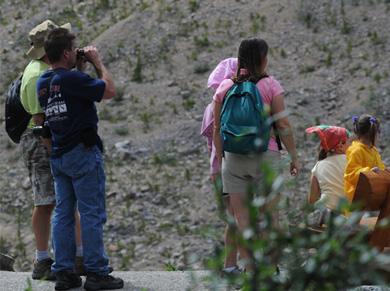 |  |

 | The above sequence is seven frames shot within about a 30 second interval after we heard a boom and looked up to see a shower of white coming down the rock. Another fascinating aspect of hiking here is that several times we heard a "boom" and could look up to see a shower of white particles coming down the rocky slope below the glacier. We would of course have liked to see a big chunk of ice fall and bound down the rocky face, but that did not happen. For one thing, we were at least a mile from the glacier, so it took the sound more than five seconds to reach us. So by the time we heard the "boom", the ice in free fall could fall 400 feet, and long before that it would smash into the rock and it appears that those collisions just make snow out of it. I would have expected some larger chunks of ice, but what we saw was all small particles. The more detailed view at left does show some ice particles, some of which may be baseball size. I would guess that this is about 45 sec after the event, and the view below earlier, maybe 15 seconds after the event. It doesn't have noticeably larger chunks, so it looks like the larger piece that breaks off just shatters upon impact.  |
 | Jeff, Darla and Mark round a turn on the trail where it is just following a rock wall. Then it rose quicly to go over a hump where we got more views of the mountain. 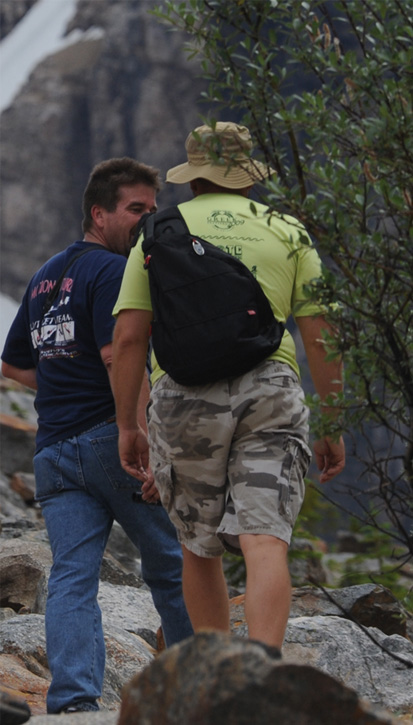 |
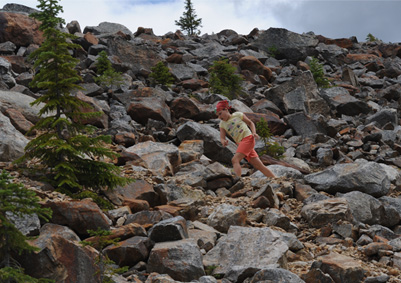 | 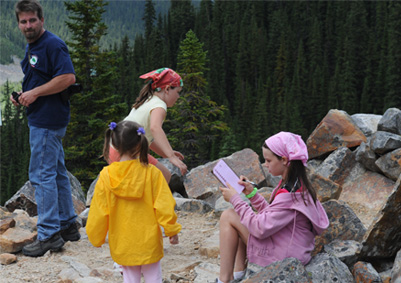 |
The trail then rose steeply through a series of switchbacks in an area covered by large rocks. Jordan is on one of those switchbacks above. When Mark and the girls stopped for a breather at the end of one of the switchbacks, Ashleigh does some writing in her journal.
 | Ashleigh and Jordan are keen on running ahead on the trail and Jeff and Mark follow them. After the rocky switchbacks, the trail drops on the other side of this rocky ridge, which I presume is part of an older glacial moraine. The trail follows it for some distance. |
This is a very nice trail, following the rocky moraine ridge, but it does block our view a bit. The forest is very green and it is a pleasant place. | 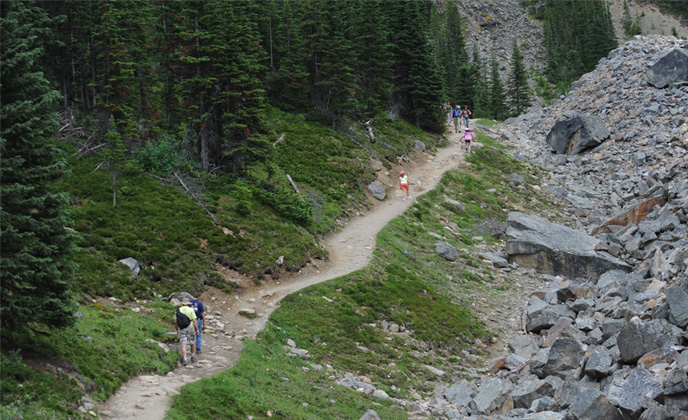 |

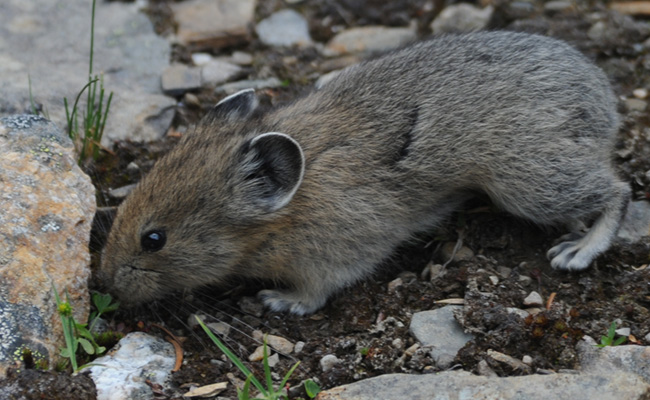 | The good thing about following this heap of loose rocks is that it provides home for lots of furry animals, like this pika. It was about four inches long and looked like a miniature rabbit when it sat, but it's face is more mouse-like. Life must be rough out here in the rock pile. From the mark on its side, it looks like it had a close call. |

These gentle little vegetarians are usually quite skittish, since they make a nice mouthfull for lots of predators. But this one just sat there and chewed on this plant stem as I tried to stand perfectly still. | 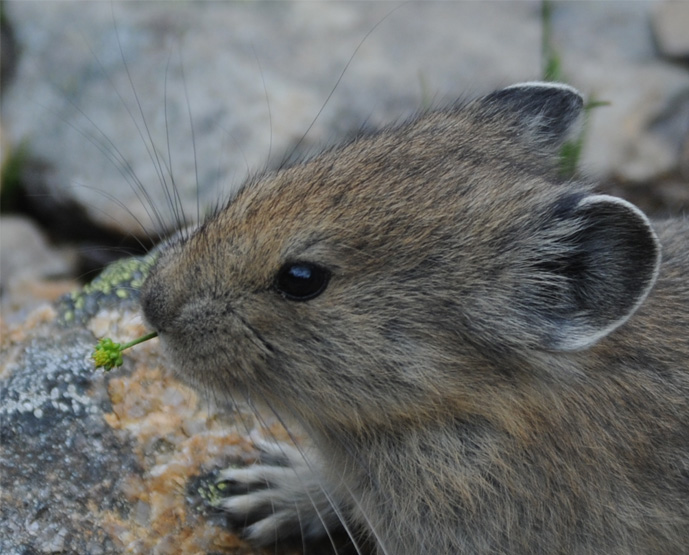 |
 |  |
Ashleigh and Jordan like to run ahead and explore. Above left they found a shaded rocky area with some snow patches remaining. Then Ashleigh stops and writes about it in her journal. Jeff, Darla and Elyse climb up off the trail beside the rock ridge.  |  |
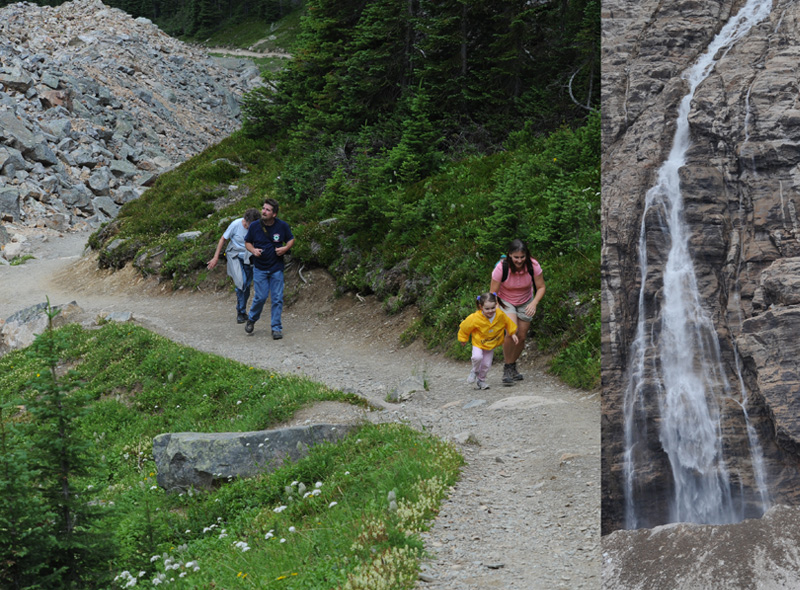
Brenda, Mark, Darla and Elyse emerge from behind the jumbled rock levee and can now see sights like the falls below the Angel Glacier.
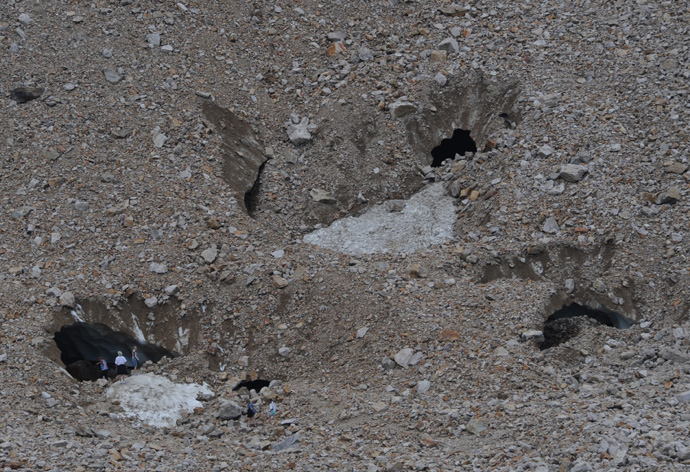 | We got a very different perspective on things from this height on the mountain. When I first looked at this picture, I wondered why I had taken a picture of little pock marks in the gravel, but then I saw the people in the lower left one and realized that these were large ice caves. When you look at the evidence of caveins on the upper ones, it certainly should make you cautious about going into one. |
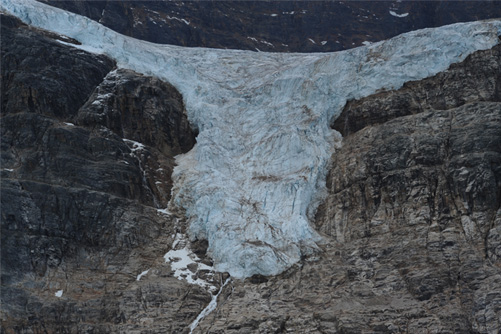 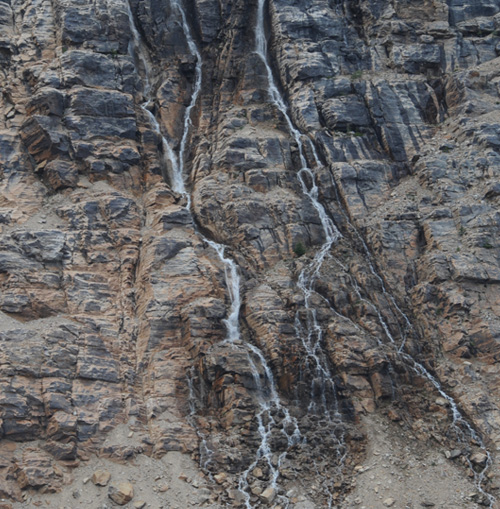 | 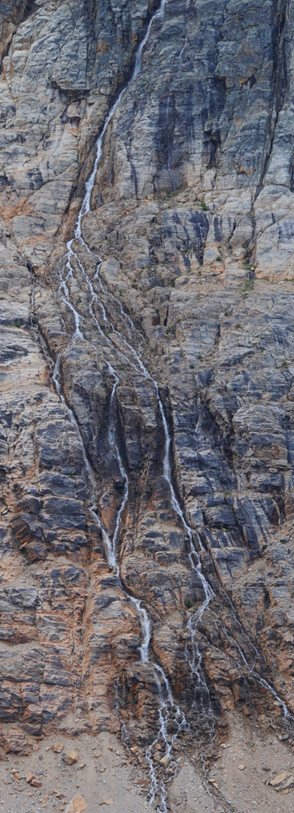 |
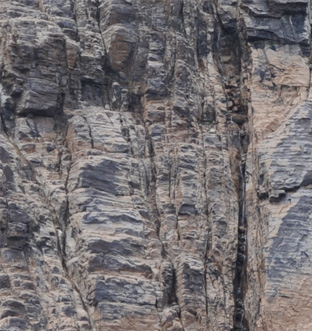 | We could now looking at Angel Glacier at almost eye level as shown in the photo above left, and could examine the intricacies of the icemelt streams that coursed hundreds of feet down the bare rock walls. If you looked carefully, you could see other intricate grooves in the rock face where former streams over a long period of time had carved out their courses in the rock face. The small section of the rock wall shown at left is to the left of the current streams shown in the photos above. You could trace these grooves all the way up the rock, so it was clear that they represented former paths for streams similar to the ones now running. Perhaps the "rock flour" from glacier action put just a bit of scouring powder in the streams to help them carve their courses into the rock face. It was a fascinating place. |

Admittedly, this is not very beautiful, but it was fascinating nevertheless, viewed from our high perch on the Edith Cavell trail. You could see clearly the breaking up of the ice wall that gave all the icebergs we saw. When you looked at the rock debris that covered the top of the ice sheet, you could then understand the dark lines across the ice at lower levels, presuming that these represent layers over time. It appears that in some years there was more rock debris coming down from the mountain above to make the darker lines across the face of the ice wall.
 | Climbing further up the trail, we could see the Angel Glacier through the trees. |
We could look right across the valley and see the great size and ruggedness of the Cavell Glacier. | 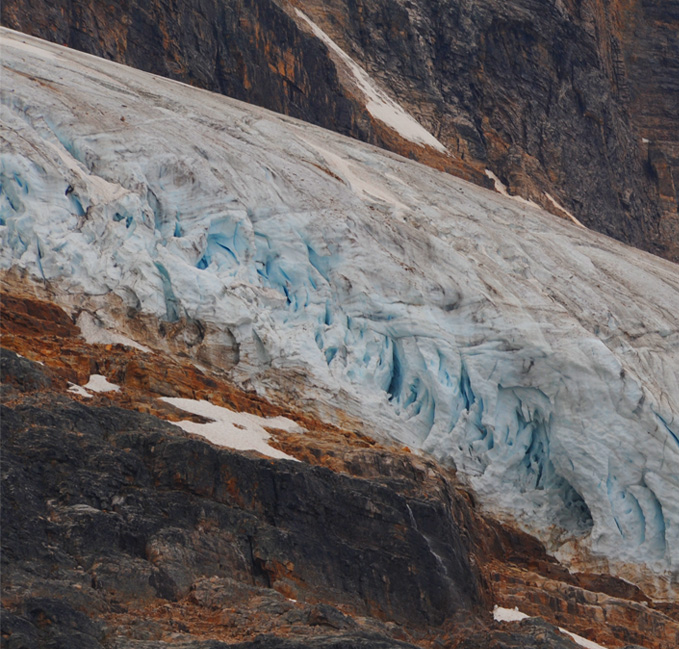 |
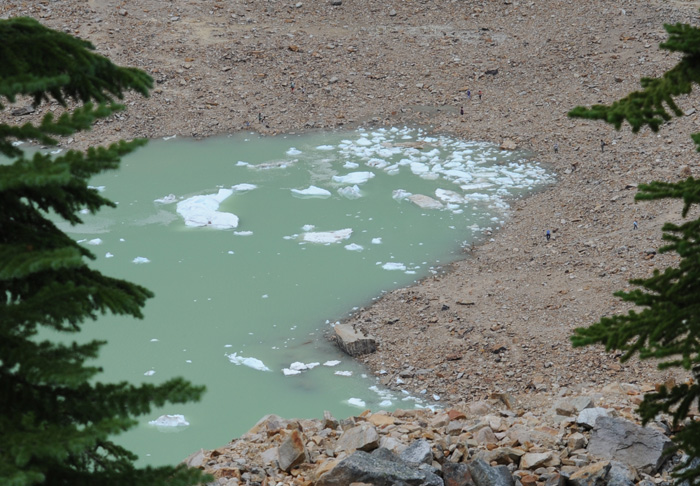 | We got a good view of the part of the glacier pool with the collection of icebergs from the wall. One interesting thing about this view is that we can see the big rock on which the girls worked so hard to build their stone columns - and you can even see that their columns are still standing! |
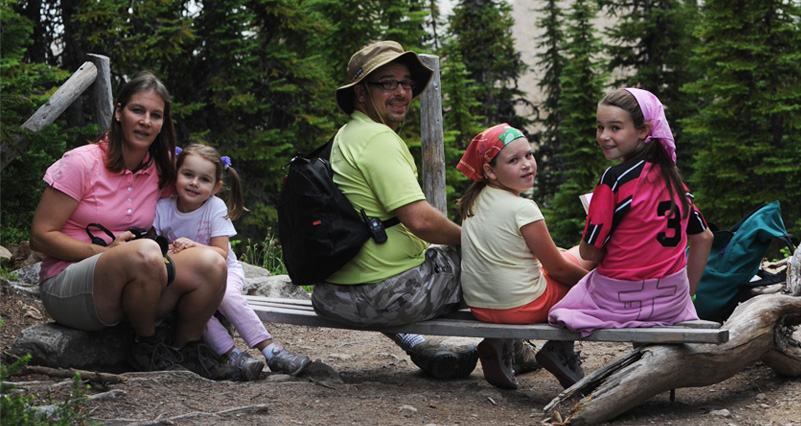
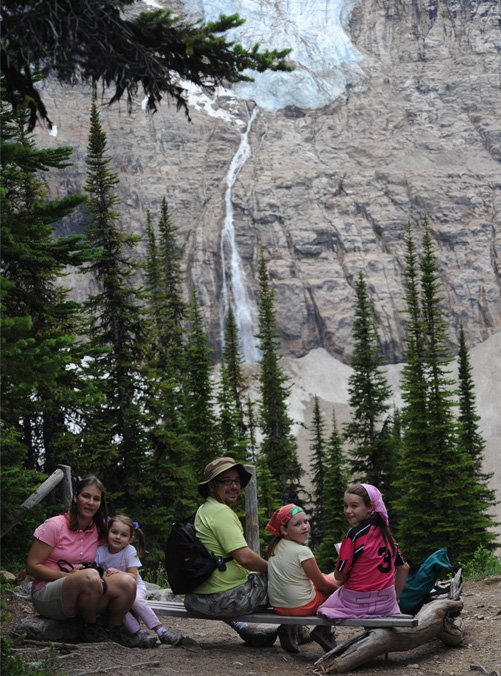 | We took a break at this beautiful place where you could see the glaciers through the beautiful trees.  |
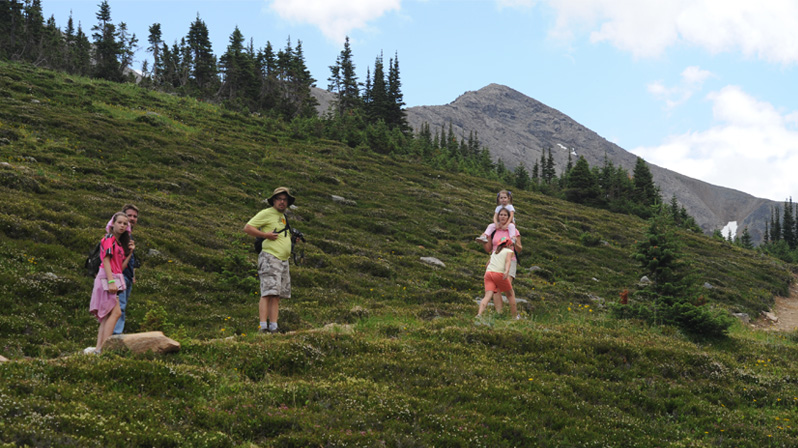
We are nearing the high lookout at 2119 meters (6950 ft) and have climbed 357 m (1170 ft) in our two miles on the trail according to the signs. You can see that we are about to emerge above the tree line. In these open spaces, there were a lot of nice wildflowers.
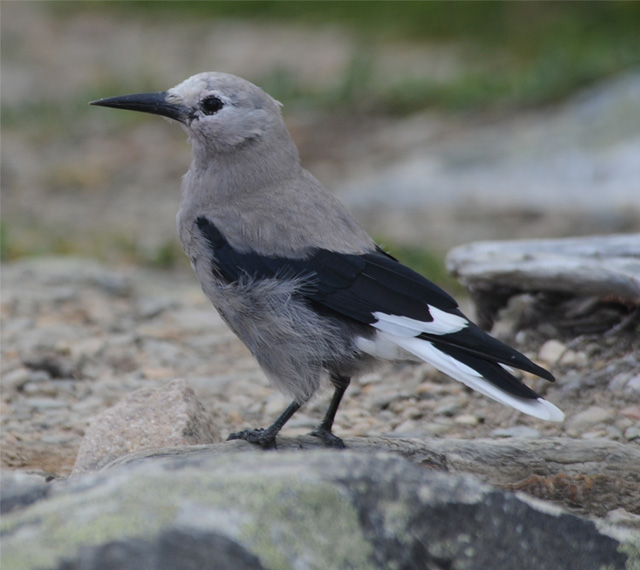 | We were visited by one of our old friends, a Clark's nutcracker. Seeing them is part of the excitement of traveling to the west since we saw them at Crater Lake in 1982. 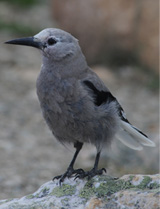 |

From near our high point on the trail, we get an overview of the bottom of Angel Glacier and the glacial pool and ice sheet below it. We are now actually looking down on the bottom tip of Angel Glacier. This had been a memorable place for us. We headed down the trail and I made the switch to closeups to have a closer look at some of the wildflowers.
| Edith Cavell wildflowers |
| Ice Fields Parkway |
2009